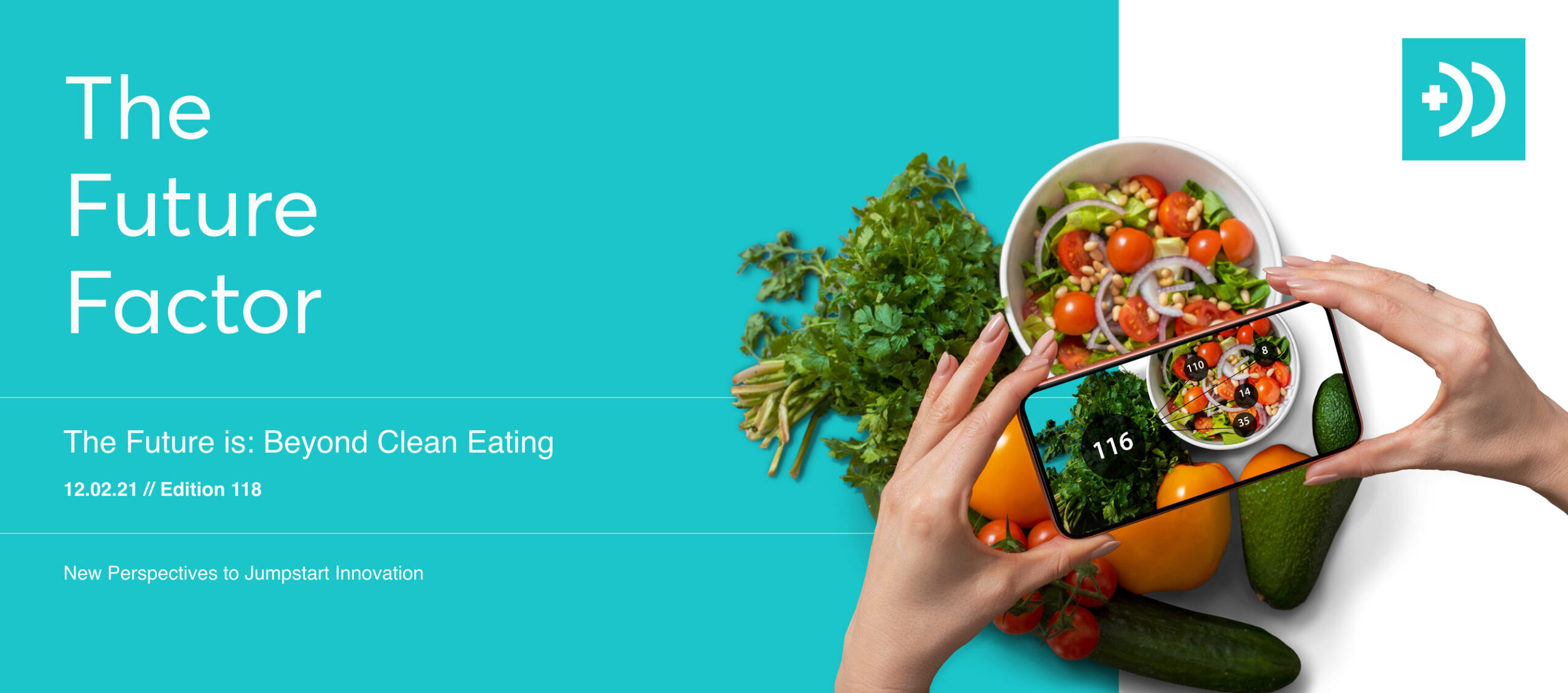The Future is: Beyond Clean Eating
The clean-eating wave is morphing into pure eating, as we go beyond seeking natural and nutritional benefits alone to shunning additives, allergens, and toxins. Interest in gluten-free has nearly quadrupled over the last decade; vegan milk sales rose 36% since 2017. But a healthy New American Diet is complex. For instance, many consumers have turned to nut- and soy-based products in the name of plant-based nutrition, but some people are finding that they are soy-sensitive, and nut allergies are up 21% since 2010. All this indicates that we will have a protein-supply crisis on our hands soon enough. No doubt, eating well can be a challenge, but there’s never been a better time to do so. Here’s a taste of tomorrow.
Now: The Nontoxic Diet

What’s Fresh: We’re becoming attuned to all the junk in our food. Even the most pristine-looking fruit may have been sprayed with pesticides, our premium fish has been swimming in water tainted with micro-particulate plastics, and we’re drinking our filtered water from plastic bottles loaded with hormone-disrupting phthalates. Look for a new emphasis on toxin-free products (and you’ll need to be able to prove that status). We will also turn to cleansing products, like Clean Tea, to purify our bodies.
How It’s Changing the Game: Brace yourself for a whole new set of standards for food. The script is about to be flipped from “Do less harm” to proactively uplift your consumers’ health with ultra-pure products.
3 Action Steps for Brands:
- Gluten-, nut-, and dairy-free are no longer enough. Prepare to ensure that your products are allergen-free, mold-free, phthalate-free, plastic-free — and more.
- Develop products that actively offset toxins in our food.
- Shift more strongly away from plastic as it comes into deep-problem focus.
Now: Ethical Cell-Based Milks

What’s Fresh: What comes after plant milks? How about human-cell-based milk? That’s what Singapore’s TurtleTree Labs is engineering, aiming to provide millions with access to sustainable, higher-quality dairy. Using the blueprint of human milk, it will build a better beverage in the lab and commercialize lactoferrin — a lactation-produced protein that optimizes brain development and inflammatory responses. However, it may be a couple of years before cell-based whole milk meets regulatory requirements.
How It Changes the Game: Infant formula, cow’s milk, and vegan milk may pale in comparison to the health benefits of this naturally derived nutrition.
3 Action Steps for Brands:
- Develop a POV on ethical cell-based foods and how your brand will play in that arena.
- Educate your consumer about the environmental benefits of moving post-dairy. Among large-scale dairy farming’s many negative impacts to the environment, consider cows’ methane production, which contributes to climate change.
- Explore sustainable programs that allow your cell-based food business to give nutrition back to the 45M malnourished children around the world.
Next: Bugging Out

What’s Emerging: In 30 years, there will be almost 9 billion humans on the planet — and there won’t be enough protein to fuel us. Insects, already on the menu for 2 billion people, provide a cheap, lean, and efficient source of nutrition that will boom in coming years. Canada’s Vivotein is turning bugs into animal feed. And Brooklyn Chef Joseph Yoon is offering salads, kimchi, and guacamole made with cicadas on his menu.
How It Creates the Future: To save the planet and end starvation, we’ll all be called upon to overcome our food taboos and embrace high-protein, low-fat bugs — and other radical sources of protein.
3 Things to Prepare for:
- Changing behavior will require scientific evidence of the safety and health benefits of bug-eating. Start gathering your facts.
- Go forward gradually: Introduce insect ingredients as a garnish first, then move to the center of the plate.
Embrace influencers: Seeing relatable faces willing to eat insects will go a long way toward normalization.




